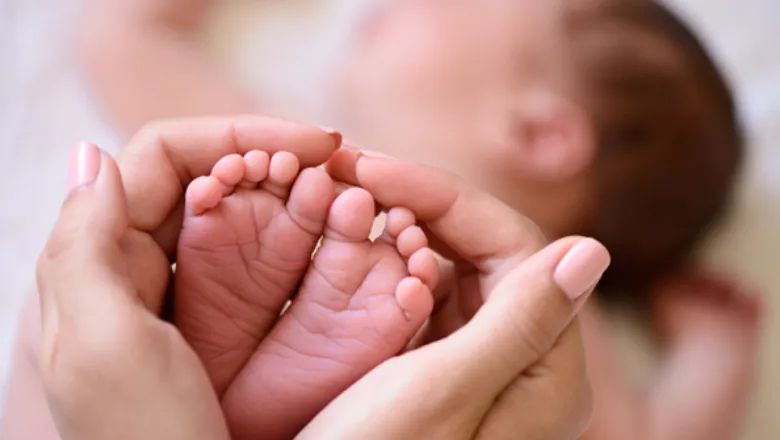Premature birth is very hard to predict, so doctors have to err on the side of caution and mothers deemed to be at risk often don’t actually have their babies early, putting undue strain on everyone involved. My team has developed preterm birth prediction tools that are very accurate later in pregnancy, like fetal fibronectin tests – but at that stage, you can only manage the risks, not stop it from happening. The sooner we can find out who’s at risk, the more we can do to keep mothers and babies safe.
Study author Andrew Shennan OBE, Professor of Obstetrics from the School of Life Course Sciences
24 August 2021
Premature birth could be predicted as early as 10 weeks pregnant
Mothers at risk of premature birth could be identified far sooner in pregnancy than current tests allow by looking for specific bacteria and chemicals in their cervicovaginal fluid.

The new study, published in the Journal of Clinical Investigation from researchers at King’s and pregnancy charity Tommy’s, with funding and support from the NIHR Guy’s and St Thomas’ BRC, looks at how clues in the mothers’ vaginal microbiome (tiny living organisms that can affect health, like bacteria and viruses) and metabolome (small molecules naturally created by the body, like sugars and acids) can help predict the risk of premature birth.
Previous research suggests that infection and inflammation can shorten and weaken the cervix (the neck of the womb), which normally lengthens and produces chemicals in pregnancy to protect the baby before shortening and softening for labour and birth – so if the cervix gets shorter at an earlier stage, this puts the baby at risk of infection and premature birth. Researchers have uncovered specific bacteria and chemicals in pregnant women’s cervicovaginal fluid that can act as warning signs, so infection or inflammation can be found and treated early to protect mothers and babies.
The team looked at data from four UK hospitals on 346 mothers, 60 of whom gave birth prematurely (before 37 weeks pregnant). Researchers analysed cervicovaginal samples taken at 10-15 weeks pregnant, and again at 16-23 weeks, then grouped women by their typical communities of bacteria and biochemicals. They checked this against cervical length measurements (the current standard NHS assessment for premature birth risk) and followed up to see who gave birth early.
For the first time, a specific bacterium (Lactobacillus acidophilus) was found to limit the risk of early premature birth, which researchers hope will lead to new preventative therapies. A combination of metabolites (glucose, aspartate and calcium) and bacteria (Lactobacillus crispatus and acidophilus) was linked to birth at or before 34 weeks, while seven different metabolites (leucine, tyrosine, aspartate, lactate, betaine, acetate and calcium) were associated with birth at or before 37 weeks.
Crucially, these links were equally significant when mothers were tested in the first and second trimester – meaning those at risk of premature birth could be accurately identified much earlier in pregnancy than current tests allow, and then benefit from medical or surgical treatments that aren’t possible in late pregnancy.
Researchers also found interesting ethnic differences in the vaginal microbiome; Black mothers were more likely to have high levels of certain antibacterial proteins (elafin and cathelicidin) linked to cervicovaginal inflammation and therefore premature birth. The association is not significant enough to explain the increased rates of premature birth among Black mothers, and could reflect other environmental and social differences, so authors concluded that larger studies with more robust data are needed.
Lead academic Professor Rachel Tribe added: "With so many factors in play, it’s unlikely that testing for the same single bacteria species will predict preterm birth in every mother, but we now have a panel of bacteria and metabolites that could be useful. In particular, tests during early pregnancy for Lactobacillus crispatus and L. acidophilus could provide reassurance to mothers who would otherwise be unduly worried, and help those who need it get specialist care as soon as possible. After 5 years of work on this study, we’re delighted to have this greater understanding of how the vaginal environment can influence preterm birth risk.”
Tommy’s chief executive Jane Brewin commented: “With 60,000 babies born prematurely each year in the UK, there’s a real and urgent need for better ways to predict and prevent preterm birth. This new study has not only uncovered warning signs that could be used to develop new tests, but also a possible treatment which could make pregnancy safer for the most vulnerable, so this new avenue of research has really exciting potential for clinical practice.”

